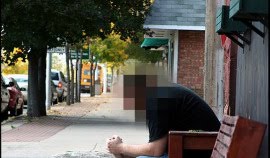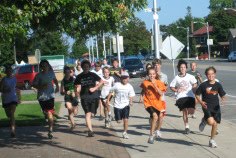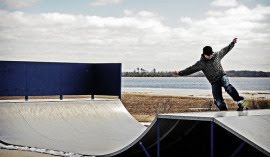Even Sparse Rural Counties Have Homeless Problems
By Bobbie Stacey - Founder of Home Run Innovations Inc.
I recently had the pleasure of compiling statistics on the homeless population of Delta County Michigan for the next HUD Annual Homelessness Assessment Report (AHAR) to Congress. The results mildly surprised me, despite several years involvement with front line service providers in our area. Read on and see for yourself.
• During the 12 month period from 10/01/07 through 09/30/08, an AVERAGE of over 18 HOMELESS PERSONS were sheltered EACH NIGHT of the year in Delta County.
• The above statistic does NOT include our always full, 15-bed capacity domestic violence shelter.
• During this same time period, only 8 emergency shelter beds were available in the entire county - 4 beds at the men's shelter run by The Salvation Army and a total of 4 beds between two rooms on site at St. Vincent de Paul.
• The remaining 10 persons per night were sheltered using emergency motel vouchers - making it almost impossible to case manage these individuals and break their cycle of homelessness.
• The facts I have cited only cover those persons who requested and received services. The counts do not include persons such as homeless PTSD vets hiding out in the woods. They also do not include many persons who parked and slept in their vehicle in the Wal-Mart parking lot all summer or much of the tent population hidden within the buckthorn in the wetlands behind Wal-Mart.
Last May, The Salvation Army provided a few nights shelter to a young woman who had been sleeping in a boxcar. This woman was employed - she cleans motel rooms almost full-time. As far as anyone knew she had no substance abuse issues. Before follow up assistance, such as help with a Section 8 housing application, could be offered, she disappeared - apparently to sleep in an abandoned trailer at the back of a friend's property.
As recently as 6 years ago, I was barely aware that we even had a homeless problem. That's a misperception commonly shared around here. After I've done a radio interview to promote The Salvation Army "Home" Run, or because of the generous PSAs the radio stations have given me to promote this homelessness fundraising event, people approach me often remarking "I never knew we even HAD a homeless problem" because they don't see the more stereotypical evidence such as the meth-addicted "Tweekers" who sleep in the parks of Arcada, CA.
Surprised?
Read more...
 Net-Zero Energy Building for the Homeless Introduced at The Salvation Army Home Run
Net-Zero Energy Building for the Homeless Introduced at The Salvation Army Home Run














